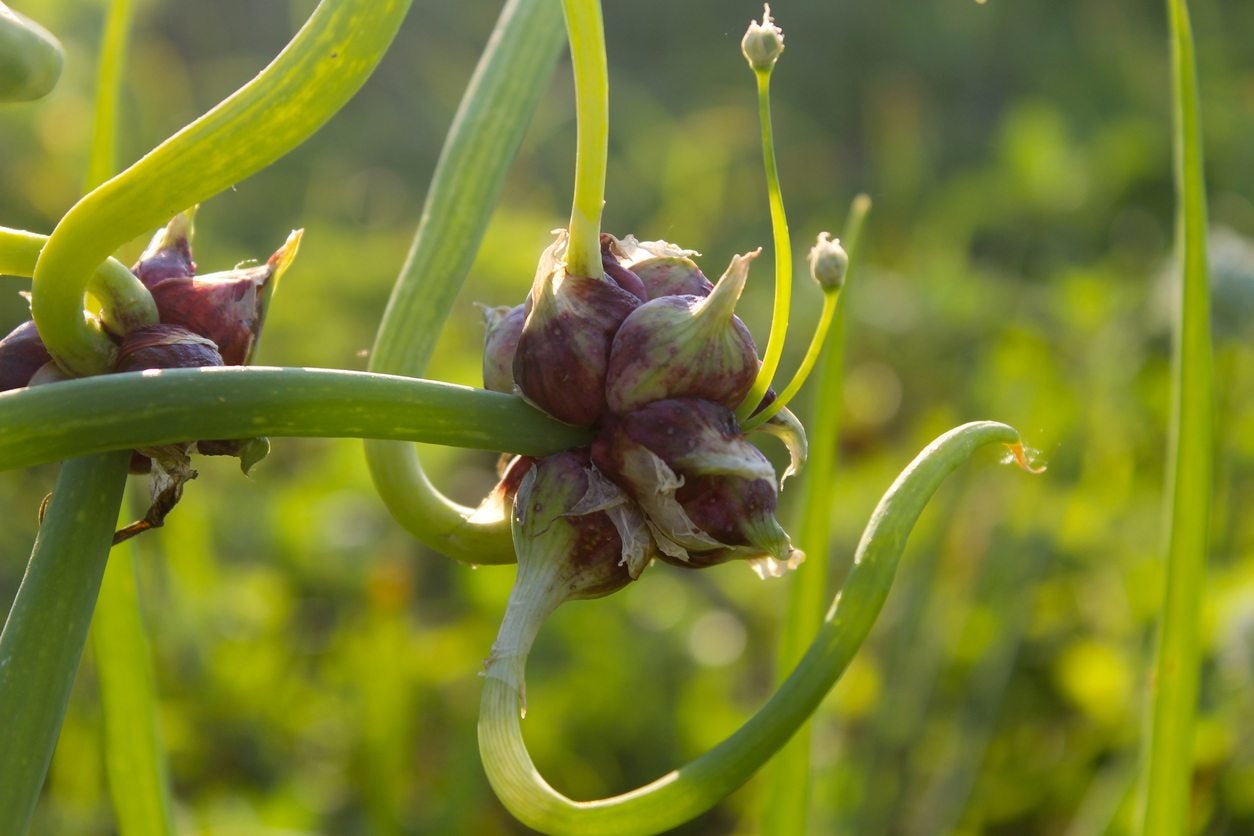
Ever heard of the walking onion? This quirky plant, also known as the Egyptian walking onion, has a unique way of spreading. Instead of relying on seeds, it produces small bulbs at the top of its stalks. These bulbs get heavy, bend the stalks to the ground, and take root, creating new plants. It's like the onion is taking a stroll across your garden! Walking onions are hardy, easy to grow, and can survive harsh winters. They offer a continuous supply of fresh onions, making them a favorite among gardeners. Curious about more fun facts? Keep reading to learn all about this fascinating plant!
Key Takeaways:
- Walking onions, also known as Egyptian onions or tree onions, are perennial plants with a unique growth pattern. They produce topsets instead of seeds, self-propagate, and come back year after year.
- In addition to being fascinating to look at, walking onions are versatile in the kitchen. Their edible bulbs, tops, and greens can be used in various dishes, and they also have historical significance and health benefits.
What Are Walking Onions?
Walking onions, also known as Egyptian onions or tree onions, are a unique type of perennial onion. They get their name from the way they "walk" across the garden. Let's dive into some fascinating facts about these intriguing plants.
Unique Growth Pattern
Walking onions have a distinctive growth pattern that sets them apart from other onions.
- Topsets Formation: Instead of producing seeds, walking onions form bulbils, or topsets, at the top of their stalks. These topsets can be planted to grow new onions.
- Self-Propagation: When the topsets become heavy, they cause the stalk to bend and touch the ground. This allows the topsets to root and grow new plants, making it seem like the onions are "walking" across the garden.
- Perennial Nature: Unlike regular onions, walking onions are perennials. They come back year after year without needing to be replanted.
Culinary Uses
Walking onions are not just interesting to look at; they are also versatile in the kitchen.
- Edible Bulbs: The underground bulbs of walking onions can be used just like regular onions. They have a strong, pungent flavor.
- Tops and Greens: The topsets and green stalks are also edible. They can be used in salads, stir-fries, or as a garnish.
- Pickling: The small topsets are perfect for pickling. They add a unique flavor to pickled vegetable mixes.
Historical Significance
Walking onions have a rich history that dates back centuries.
- Ancient Cultivation: These onions have been cultivated for thousands of years. They were likely grown by ancient Egyptians, which is why they are sometimes called Egyptian onions.
- Survival Food: During times of scarcity, walking onions have been a reliable food source due to their hardy nature and ability to self-propagate.
Growing Conditions
Understanding the ideal growing conditions can help you cultivate walking onions successfully.
- Hardy Plants: Walking onions are extremely hardy. They can survive harsh winters and hot summers, making them suitable for a variety of climates.
- Soil Requirements: They prefer well-drained soil but can tolerate a range of soil types. Adding compost can improve growth.
- Sunlight Needs: These onions thrive in full sun but can also grow in partial shade.
Health Benefits
Walking onions offer several health benefits, making them a great addition to your diet.
- Rich in Nutrients: They are packed with vitamins A and C, as well as minerals like calcium and iron.
- Antioxidant Properties: Walking onions contain antioxidants that help fight free radicals in the body, potentially reducing the risk of chronic diseases.
- Digestive Health: The fiber in walking onions aids in digestion and promotes a healthy gut.
Fun Facts
Here are some fun tidbits about walking onions that you might not know.
The Final Word on Walking Onions
Walking onions are a fascinating addition to any garden. These unique plants, also known as Egyptian onions, have a quirky way of spreading. Instead of seeds, they produce bulbils at the top of their stalks. When the stalks bend, the bulbils touch the ground and start new plants. This gives the appearance of the onions "walking" across the garden.
These hardy perennials can thrive in various climates and require minimal care. They’re perfect for gardeners looking for low-maintenance crops. Plus, every part of the plant is edible, from the bulbs to the greens. Walking onions offer a continuous supply of fresh produce.
Adding walking onions to your garden not only provides a reliable food source but also adds a touch of nature’s whimsy. So, if you’re looking to spice up your garden with something unique and useful, walking onions are a great choice.
Frequently Asked Questions
Was this page helpful?
Our commitment to delivering trustworthy and engaging content is at the heart of what we do. Each fact on our site is contributed by real users like you, bringing a wealth of diverse insights and information. To ensure the highest standards of accuracy and reliability, our dedicated editors meticulously review each submission. This process guarantees that the facts we share are not only fascinating but also credible. Trust in our commitment to quality and authenticity as you explore and learn with us.


